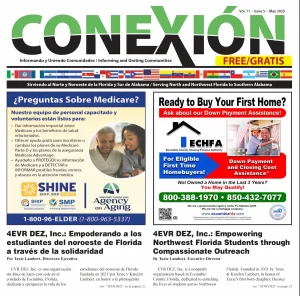May is Stroke Awareness Month
What is a stroke?
Strokes are when blood vessels in the brain rupture and bleed, or when there is a blockage in the blood supply to the brain. The rupture or blockage prevents blood and oxygen from reaching the brain’s tissues. According to the Centers for Disease Control and Prevention (CDC), stroke is the fifth cause of death (146,383 deaths) in the United States. Every year, more than 795,000 in the U.S. people have a stroke. About 610,000 of these are first or new strokes. Approximately 185,000 strokes—nearly 1 of 4—are in people who have had a previous stroke. Without oxygen, brain cells and tissue become damaged and begin to die within minutes.
The loss of blood flow to the brain damages tissues within the brain. Symptoms of a stroke show up in the body parts controlled by the damaged areas of the brain. The sooner a person having a stroke gets care, the better their outcome is likely to be. For this reason, it’s helpful to know the signs of a stroke so you can act quickly.
Stroke symptoms
- paralysis
- numbness or weakness in the arm, face, and leg, especially on one side of the body
- trouble speaking or understanding speech
- confusion
- slurring speech
- vision problems, such as trouble seeing in one or both eyes with vision blackened or blurred, or double vision
- trouble walking
- loss of balance or coordination
- dizziness
- severe, sudden headache with an unknown cause
A stroke requires immediate medical attention.
If you think you or someone else is having a stroke, have someone call 911 right away.
Prompt treatment is key to preventing the following outcomes:
- brain damage
- long-term disability
- death
It’s better to be safe than sorry when dealing with a stroke, so don’t be afraid to call 911 if you think you recognize the signs of a stroke.
How do strokes affect people?
The effects of a stroke depend on a lot of things,
including:
●Which part and how much of the brain is affected
●How quickly the stroke is treated Some people who have a stroke have no lasting effects.
Others lose essential brain functions. For example, some people become partly paralyzed or unable to speak. Stroke is one of the leading causes of death and disability in the world.
How can you tell if someone is having a stroke?
There is an easy way to remember the signs of a stroke.
Just think of the word
“FAST”
“FAST”
Each letter in the word stands for one of the things you should watch for:
Face – Does the person’s face look uneven or droop on
one side?
- Arm –Does the person have weakness or numbness in one or both arms?
- Does one arm drift down if the person tries to hold both arms out?
- Speech – Is the person having trouble speaking?
- Does his or her speech sound strange?
- Time – If you notice any of these stroke signs, call for an ambulance (dial 9-1-1).
You need to act FAST. The sooner treatment begins, the better the chances of recovery.
Can strokes be prevented?
Many strokes can be prevented, though not all. You can significantly lower your chance of having a stroke by:
Taking your medicines exactly as directed. Medicines that are especially important in preventing strokes include:
- Making lifestyle changes:
- Blood pressure medicines
- •Medicines called statins, which lower cholesterol
- •Medicines to prevent blood clots, such as aspirin or blood thinners
- •Medicines that help to keep your blood sugar as close to normal as possible (if you have diabetes)
- Stop smoking, if you smoke
- •Get regular exercise (if your doctor says it’s safe) for at least 30 minutes a day on most days of the week
- •Lose weight, if you are overweight
- •Eat a diet rich in fruits, vegetables, and low-fat dairy products, and low in meats, sweets, and refined grains (such as white bread or white rice)
- •Eat less salt (sodium)
- •Limit the amount of alcohol you drink
- -If you are a woman, do not drink more than 1 drink a day
- -If you are a man, do not drink more than 2 glasses a day
If you suspect you are experiencing symptoms of a stroke, you must seek emergency medical treatment. Clot-busting medication can only be provided in the first hours after the signs of a stroke begin, and early treatment is one of the most effective ways to reduce your risk for long-term complications and disability.


